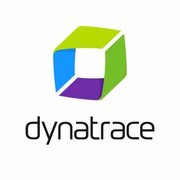Best Application Infrastructure Software 2025
Application infrastructure software and tools provides and ensures integrations between an enterprise's applications to support business workflow.
We’ve collected videos, features, and capabilities below. Take me there.
All Products
Learn More about Application Infrastructure Software
What is Application Infrastructure Software?
Application infrastructure software supports the development, delivery, and monitoring of business applications. Sometimes referred to as AIM (Application Infrastructure and Middleware) Software, it encompasses the software that is required to support all the features, functions, and services offered by an application.
Application features and their resource requirements will determine which application infrastructure software tools are appropriate. Application infrastructure software’s wide-ranging functions support multi-layered application architectures, including presentation layers, logic layers, and data layers, delivering individual application services, application microservices, and monolithic applications.
Application infrastructure software is deployed on-premises or in the cloud and helps ensure the dependable, secure, and high-performance delivery of applications.
This software includes application integration, transformation, and modernization features that promote productive and efficient use of applications and their resources.
Application Infrastructure Software Features
Application Infrastructure Software will offer many of the following features.
- Application development and delivery framework
- Container management
- Application integration, modernization, APIs
- Application monitoring
- Support and monitor application servers, web servers, database servers, and networks
- Load balancing
- Storage management
- Security, firewalls, and intrusion detection
- Performance management
- Analytics, ML, AI, data visualization, dashboards, and reporting
Application Infrastructure Software Comparison
Consider the following before purchasing Application Infrastructure Software.
Use Case: Selection of application infrastructure software tools will be based on the type of applications you are running, their resource requirements, and your IT infrastructure. For example, Amazon EC2 supports cloud-based application services, Red Hat Open Shift supports Kubernetes application platforms, others like .Net support building a broad range of applications and services.
Cost: There are several open-source free software tools that can be explored before making a financial investment in other tools For example, .Net is a free open-source development platform that creates apps and services on multiple devices and operating systems and Apache offers free open-source, cross-platform web server software.
Preparation: To help with your selection of new application infrastructure software, undertake an inventory of your current applications, those that are under development and those scheduled for development. Identify their application resource and service requirements, and their interdependencies. This information will guide your decision-making.
Pricing Information
Many application infrastructure software tools are open source and free of charge. The no-cost tools sometimes have a cap on the scale of the deployment. Vendor quotes are required for other tools and are based on the software’s features and the scale and characteristics of your IT infrastructure. Free trials are available.



















